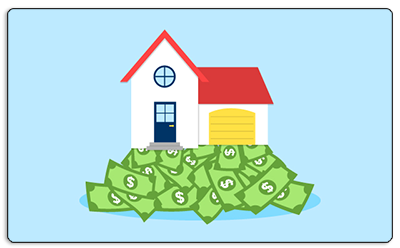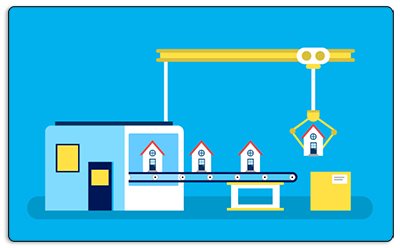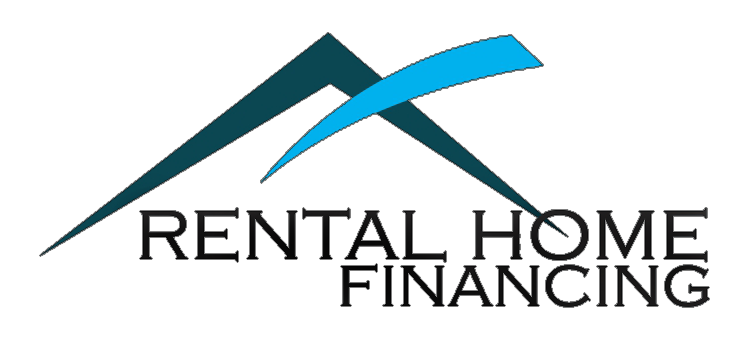Rental Home Financing Investment Loans
Landlord & Investor News
InvestmentLenderLandlordAirBnBBlanket LoanVacation RentalNEWS

Blog (214)

Growing Your Investment Portfolio
How Many Mortgages Can I Have? At some point, every real estate investor ends up asking the same question, the answer may surprise you.
It usually comes after they’ve purchased three or four properties and are really beginning to see the potential for a much larger portfolio, provided they can find the financing for it.
At this point, they begin to wonder, “just how many mortgages can you have?”
Sound familiar?
If your real estate portfolio is coming along and you don’t want to stifle its growth, then finding out how many mortgages you can have is the natural next step.
 Investment Property No Ratio Loans
Investment Property No Ratio Loans
Building a portfolio of multiple rental properties is almost always a challenge – albeit a rewarding one.
To be successful, you must cultivate an eye for finding the best possible opportunities and then securing them at the lowest price. Of course, that’s just the beginning. After purchasing a property, you then need to go through the process of renting it out and managing the investment year after year.
Nonetheless, for many investors, the biggest challenge remains securing a loan to begin with. Unfortunately, the more properties you add to your portfolio, the harder this tends to be. Many investors have to pass up otherwise amazing opportunities because their current portfolio would make it impossible to add another home.
The good news is that there is a solution: No-Ratio Loans for Investment Properties.
The 4 Top Single-Family Housing Real Estate Markets in America
 Location. Location. Location.
Location. Location. Location.
Everyone knows that’s the most important consideration when buying a home.
The problem is that there are countless locations from which to choose.
Where do you even begin when it comes to such an important decision?
Well, if you’re looking to add a home to your rental portfolio, you have a huge advantage: in terms of location, all you care about is ROI.
What markets will offer you the best returns?
Fortunately, the top single-family housing real estate markets in the country will give you some very attractive options.

LLC for Single Family Rental Properties
Single family rental properties offer a number of advantages to the owner.
Generally, the time between when you acquire one and when you can begin renting is minimal – meaning cashflow begins ASAP.
Nonetheless, many provide great returns with low overhead and the promise of tremendous resale values.
However, the means by which you own one of these properties will have just as big an impact on your portfolio as the actual home itself.
That’s why most investors choose to use an LLC for single family rental properties.
The Secret of Investors is Opportunity Zones
How to use Opportunity Zones to Break Barriars
- Would you love to add another rental property to your portfolio?
-
Are you having trouble with financing because you’re already stretched a bit thin?
-
Have traditional lenders decided you’ve reached your lending limit?
If this sounds familiar, it’s vital that you learn about Opportunity Zones right away. The aptly named legislation could be the best opportunity you have to add new, promising properties to your portfolio and enjoy an incredible tax break.
What Are Opportunity Zones?
All over the country, there are communities suffering from severe economic limitations. To make matters worse, these areas have very little hope of ever making much of a comeback – at least not on their own.
This is why many of them have been designated as Opportunity Zones. Anyone who invests in their economic revitalization may be qualified for preferential tax treatment.
Opportunity Zones were created by the Tax Cuts and Jobs Act on December 22, 2017. They were largely seen as an attempt to provide relief to those populations that depend on community development programs and affordable housing – people who may not have otherwise benefited greatly from the tax cuts.
One reason to be especially hopeful that this new legislation will reach its desired goal is because it lacks an authorized cap on how much capital may be made available through these investments.
This means an estimated $2.2 trillion worth of unrealized capital gains derived from stocks and mutual funds could be funneled into community revitalization.
Instead of individuals and corporations bearing the full brunt of their federal tax liability, they can defer or reduce it based on the sale of appreciative assets. All they need to do is reinvest those gains into an Opportunity Fund, which leverages its pooled capital for the sake of real estate and small businesses in distressed communities.
Better still, each Opportunity Zone retains their designation for 10 years. So, investors have until December 31st, 2026.
Furthermore, any investors who hold onto their investments in Opportunity Zones for a minimum of 10 years will be eligible for an increase in the Opportunity Fund’s basis equal to the investment’s fair market value based on the date it has been sold.
Therefore, in short, the government will ease an investor’s tax burden on any stocks or mutual funds they sell if they put the money into Opportunity Zones.
Where Are Opportunity Zones Located?
Opportunity Zones exist in 18 different states, though some of these offer more locations than others.
These states are:
- Virgin Islands
- Vermont
- South Dakota
- South Carolina
- Puerto Rico
- Oklahoma
- New Jersey
- Nebraska
- Mississippi
- Michigan
- Kentucky
- Idaho
- Georgia
- Colorado
- California
- Arizona
- American Samoa
- Wisconsin
If you want to locate where the specific locations are in a state, check out this very handy map of opportunity zones.
Rental Property Tax Breaks Using Opportunity Zones
Opportunity Zones live up to their name for any investor who has stocks or mutual funds they’d like to offload without suffering the normal taxes for doing so.
In fact, many will most likely part with investments they had no intention of leaving simply so they can take advantage of a first-of-its kind opportunity.
One of the best examples of just how promising Opportunity Zones could prove for investors is rental properties. The legislation doesn’t put any limitations on using capital gains to fund investments in affordable rental housing.
Opportunity Zone Stipulations
As long as the residential real estate is located within an Opportunity Zone, it is fair game for investors. The only stipulations are that the property is:
- New or Acquired after December 31st, 2017
- Improved substantially
- Meets the statute’s active conduct standard
Each of these is basically a given for any rental property inside of an Opportunity Zone, meaning savvy investors are facing a multitude of options at the moment.
Will You Take Advantage of Opportunity Zones While These Opportunities Still Exist?
Opportunity Zones are truly a unique opening for investors who want to own rental properties. There hasn’t been an opportunity remotely similar to this one since the New Market Tax Credit (NMTC) was crated back in 2000.
So, if you let this one pass you by, it could be another 20 years before you get another chance. Keep in mind, too, that the NMTC is limited by an annual allocation amount, which has been $3.5 billion per round of allocations in recent years.
Again, Opportunity Zones don’t have these kinds of limits. That’s why now is the time to take full advantage of this legislation.
Investment Property Refinance Lenders
If you’d like to transfer your gains directly into new rental properties, act now. Contact us today and we’ll walk you through the entire process. We can help you qualify with potential rental income instead of using your W2. Since you are a seasoned investor then you should be aware that we are investment property refinance lenders ready to help you expand your empire.
 Are you an experienced real estate investor who wants to grow their portfolio by more than just a single property? Everything you need to know about a blanket loan is right here. You should know about one of the best lending solutions for that kind of venture.
Are you an experienced real estate investor who wants to grow their portfolio by more than just a single property? Everything you need to know about a blanket loan is right here. You should know about one of the best lending solutions for that kind of venture.
You came to the right place to increase your investment portfolio.
What Is a Blanket Loan?
When most people think about taking out a loan to purchase a property, they imagine a residential or commercial mortgage. This has been the standard for decades. Now things are different, we can provide a loan for many properties under one loan.
Yet, while this has become the most popular version for buying a property, investors often want to buy more than one at the same time. In these situations, an experienced investor will almost always opt for a blanket loan.
 Many Properties Under 1 Loan
Many Properties Under 1 Loan
With a blanket loan, you can secure numerous properties at once without the same inconvenience and overhead associated with multiple mortgages. Blanket loans offer a number of other unique advantages, as well.
These business-purpose loans can include:
However, they can be used to purchase many, many more. Why not try our quick form and get started today!
Cross-Collateralization Across Investment Properties – and State Lines
Another reason an experienced investor will usually choose a blanket loan is that it allows them to cross-collateralize properties – even across state lines. So, not only is the investor able to finance several properties through one lender, they can also use this arrangement to finance other deals. Look into our Foreign National Investor Financing Program.
 A Blanket Loan Can Free Trapped Equity in Your Portfolio Loan
A Blanket Loan Can Free Trapped Equity in Your Portfolio Loan
Not so long ago, developers and investors alike depended on leveraging the equity they had in properties to finance further ventures. Unfortunately, this means the investor’s equity has essentially become “trapped” within the property.
A Blanket Loan Can Leverage the Support of an LLC. While the investor’s personal financial history may play a role, as well, it’s usually very helpful to have the backing of an LLC during the consideration phase. This can lead to a much larger blanket loan than they would have otherwise received.
The Release Clause & Closing Costs
The last trait of a blanket loan that we need to talk about is the release clause. This is an essential feature because, without it, these loans would lose a crucial degree of flexibility.
In short, the release clause of a blanket mortgage gives the investor the right to sell off individual properties it covers without selling all of them. Having a way for extra money to throw at closing costs is quite an advantage. Call us today – 1-888-375-7977and speak with one of our qualified representatives
7 Advantages of a Blanket Financing Loans for Term Rentals
Aside from the traits described above, there are a number of other reasons so many investors choose to use a blanket loan for their deals. Individually, most options don’t offer these advantages. However, only a blanket loan offers all of them. Check out our top seven advantages for a blanket loan below.
 1. There Is No Limit to the Number of Properties You Can Own
1. There Is No Limit to the Number of Properties You Can Own
Fannie Mae and Freddie Mac can only offer so much help. Both FNMA and FHMC limit the number of properties they finance to just 10. Once you hit that limit, you’re on your own when it comes to financing. That’s not ideal.
Fortunately, there is absolutely no limit to the number of properties you can pay for using a blanket loan. There is also no limit to the number of properties you can own in order to be eligible to apply for one.
2. Consolidating Your Properties into One Type of Loan
Of course, that’s not the only reason a blanket loan works so well for investors with multiple properties. Even if it wasn’t one of the only sound options available, it would still be one of the most attractive simply because you can consolidate all of the properties you own under a single loan.
You could even use the additional properties to negotiate more favorable terms with a lender. Want to consolidate your properties?APPLY ONLINE NOW
3. Rental Property Financing Streamlined Accounting with Just One Small Business LLC or Business Partnership
If you think taking out multiple loans is going to be inconvenient, wait until you need to maintain the related bookkeeping year after year. Quite the nightmare with many properties. The alternative is 5 or 6 blanket loans with each one covering 10 mortgages. That is much more manageable.
 4. Leverage the Equity from Many Properties or Partner Buyouts
4. Leverage the Equity from Many Properties or Partner Buyouts
The next time you find a great property to invest in, you can pool the equity from your existing properties, cash it out, and use it as a down payment toward the purchase of this new rental home – or rental homes. Got a partner buyout planned? APPLY ONLINE NOW!
5. Greater Borrowing Power with No Debt to Income Ratio
You’ll be able to prove you’ve already been responsible with a large sum. That means you shouldn’t have much trouble securing even more.
This is a huge advantage far too many investors miss out on when they utilize individual loans for their properties.
6. Take Advantage of Your Strong Cash Flows with your Mortgage Loan
When a lender considers you for a blanket loan, they’ll conduct a global cash flow analysis on each of your properties using a Debt-Service Coverage Ratio (DSCR) assessment.
All of this works to your advantage when you bundle properties because those with stronger cash flow will help make up for those that are weaker.
 7. Reduced Risk & a Low Interest Rate than Traditional Mortgage from local banks with a Single Mortgage
7. Reduced Risk & a Low Interest Rate than Traditional Mortgage from local banks with a Single Mortgage
Although purchasing multiple properties may seem like it does the opposite, recall that a blanket loan involves the benefits of an LLC. Just one of these many benefits is that the LLC protects the investor against liability issues. These issues could otherwise put the investor’s personal finances at risk. Instead, the LLC would take the brunt of any legal recourse.
Reduce your investment risk, APPLY ONLINE NO or Call us today – 1-888-375-7977
Rental Home Financing
Your Residential Blanket Mortgage Lender for money loans!
Our residential blanket mortgage loans are specifically designed for income property owners and investors on a Nationwide basis. Borrowers, brokers, and hard money lenders now have access to an unlimited fund, backed by experienced professionals, that has attractive financing options with no seasoning and reasonable underwriting guidelines.
Rental Home Financing Investment Loans

Streamlined Financing for Small Apartment Buildings using Stated Income
Small apartment buildings and multifamily properties are currently offering up some of the best returns for investors. What financing options are there for investors seeking to add apartment buildings to their portfolios?
Small Balance Apartments
Smaller balance apartment buildings and multifamily properties are among the top property types for investors right now. After several years of giant funds chasing single family homes and larger commercial property deals in prime locations, smaller multi-unit properties can provide some of the most attractive deals for yields and growth.
In the past it hasn’t always been easy for real estate investors to find financing for small balance apartments. Lenders have preferred to put their capital into larger deals. Our new apartment building loan program changes that lender mentality with some of the most attractive rates offered in today’s market on a National level.

Forecasted Rental Property Growth Rates
Why the single-family home rental market is trending up, up, up
Single-family-home rentals are on the rise and all signs point to continued growth and opportunities for investors to cash in on the trend. Millennials opting to rent vs. buy are creating a demand for rental homes across the nation and expanding a market that has seen steady growth in recent years.
Why the huge demand for rental homes?
One reason could be a lack of inventory. According to Time MONEY, single-family home construction still hasn’t recovered from cutbacks, following the financial crisis. Potential buyers are finding housing shortages in cities like Nashville, Raleigh and Kansas City, where low inventory hasn’t historically been an issue.
Stricter credit requirements have also come into play. The loose lending practices during the last housing boom left nearly 8 million homeowners in foreclosure. What resulted was a financial reform law with new, firmer rules for lending.
Single Family Rental Homes (SFR) Vs. Multifamily Rental Property Investing
What is better; single-family home investing or multifamily apartments?
There are passionate advocates for both of these types of rental property investments. How do they really stack up? Which is the smarter move?
There are some investors who are very bullish about multifamily apartment buildings and argue that they have traditionally offered some advantages in the real estate investment space.
Let’s look at both the pros and cons of these sections of the real estate investment market.

Rental property growth rate data shows it may be a great time to both restructure and ramp up investment portfolios. Here are the stats, quirks, and opportunities rental property investors should be watching now…
The Rental Property Market Correction
Rental rates began slowing in 2016 according to CoreLogic. They experienced a massive surge in the wake of 2008, and marched upward at an amazing pace for several years back to back. Then credit slowly began to become more accessible to home buyers, while new multifamily construction took off. That construction and completions is believed to have peaked in 2017. Some softness may be patched up by tight inventory, a stronger national economy, and the absorption of new apartment units. Analysts believe that overall, the US should see continued modest gains in rental property growth rates, though trends will be localized.
 The Equifax Hack for Property Investors
The Equifax Hack for Property Investors
What does the huge Equifax credit hack mean for rental property investors?
The supersized hack of credit bureau data could have a substantial impact on real estate, the economy, millions of individuals, and rental property investing. Here’s what rental home investors need to know…
The Equifax Hack & Credit Quality
With the massive data breach at Equifax potentially impacting close to 300M Americans, plus Canadians and the British, there are likely to be many renters and would be home buyers affected over the months and years to come. Some of those who hoped to buy homes will no longer qualify for traditional home loans.
The renter pool could see a significant dip in average credit quality due to ID theft and fake accounts being taken out in consumers’ names. Rental property investors should be anticipating this. If the damage really begins to stack up, landlords may have to lower their approval criteria, and dig deeper into credit. Check if this is an applicant who has maintained good credit until recently, and maybe a real hacking victim. In which case their rent-to-income ratios may also be far better in reality than their reports show

Housing inventory shortages have been a hot issue over the last 18 months. Where is this crisis at its worst? What opportunities does it present for investors?
Realtors have been continually stressed about the shortage of housing inventory over the last couple of years. This may bring both advantages and disadvantages for some real estate investors. So, just how tight is the market? What is causing the drought in supply? Where are the opportunities?
Supply & Demand: America’s Tightest Housing Markets
The days of America being a massive buffet of homes capable of filling the appetite of every individual and global fund have certainly changed a little in the last ten years, according to the media. In January 2017, economist Jonathan Smoke said two thirds of the US housing market is seeing less inventory, with tight credit and limited construction remaining factors in this change.

How can income property investors protect their portfolios from hurricane risks?
Natural disasters and hurricanes in particular appear to be imposing increasing threats to real estate investors. Storm seasons appear to be more active, wildfires have grown worse, and direct hits to residential areas feel like they are larger and more expensive than ever. What can rental home and multifamily property investors do to be better prepared to weather these conditions, and bounce back quickly?
The Risks
Natural disasters like hurricanes bring a multitude of broad and long risks for income property investors.

Just how bad is the impact of Hurricane Harvey on the Houston housing market? What will it mean for real estate investors? What does the potential for recovery look like?
Harvey’s Impact on Houston
At least tens of thousands of Houston housing units have been impacted by Harvey. Some estimates put this damage at around $400B. That’s around 4x the cost of Katrina. Add to this the loss and damage to other commercial properties, and interruption of business, and the impact over the next few years could come close to $1T.

Where are the best places to invest in rental homes now?
Home prices are up and rental yields have been squeezed in some areas. So, where are the best markets for rental property investors to acquire new income producing assets now?
The Hunt for Yield
According to The Street, these are 10 of the best markets for rental property yields in 2017:
More...
![]()
Yield maintenance can be a new and unfamiliar term to newer real estate investors. What is it? How does it work?
Essentially, yield maintenance helps ensure the lender and their investors achieve a minimum yield on the loans they make. They need to ensure they stay profitable, and deliver on their guarantees to others.
Yield maintenance typically shows up as a prepayment premium or penalty in mortgage loan documents.This is a standard feature in many commercial real estate loans. How much it is can depend on a combination of interest rate, points, pre-payment penalties, and interest rate trends.
How Yield Maintenance Works
There are no absolute rules when it comes to applying this factor. Each lender can apply their own calculations, and desired minimum yield.
![]()
Cash flow real estate continues to grow in popularity with individual and Wall Street level investors alike. What’s the big draw to, and what advantages of this asset class?
There are many reasons cash flow properties are an attractive investment. Here are seven of those drivers to consider when looking for new investments.
Key Highlight Overview Points
- Cash Flow
- Equity Growth
- Returns
- Security
- Leverage
- Let Others Pay Your Investments
- Learn About Tax Benefits

DSCR LOANS
No ratio DSCR and DSCR based loans offer different advantages to investors, depending on their status and the type of property they are acquiring.
DSCR stands for Debt Service Coverage Ratio, which is a fancy way of saying, "is there enough cash flow from the monthly rent to cover the mortgage payment, insurance, and taxes?"
What is a DSCR Loan?
When you use a DSCR loan product, you are choosing a loan driven by the ratio of the monthly rent to the mortgage payment, taxes, and insurance. This ratio will drive the size of the loan and the pricing.
What is a No DSCR Loan?
With a No DSCR loan, the same ratio used in a DSCR loan is considered, but it's not the primary consideration for the lender when it comes to the size of the loan and the price. These are asset-based loans, based on the value of the property.
For example, with a No DSCR loan, you will get up to 70% of the value based on the appraisal with a rate falling within the lender's range. Pricing incentives may be given for good credit scores, loan-to-value, zip code, loan size, term and leased vs vacant.
![]()
Real estate investors often run into issues with financing properties once they hit about 10. Having more than 10 mortgages isn't allowed by many lenders. Some won’t loan to borrowers who have as few as 4 mortgage loans on their credit. So, how are you supposed to build your empire to 20, 30 or even 100 properties?
There are a few ways you can find the financing you need, when you have more than 10 rental properties. Since most lenders will stop loaning you money after you have 4 to 10 mortgages showing up on your credit report, you need to know where to turn, in advance. Here are a few ways to finance more than 10 properties as an investor.
A blanket mortgage allows you to finance an entire portfolio of rental properties, without limits. Builders and developers often use these types of loans along with commercial property investors. When you need to fund more than one property, you can use a blanket loan, which will act as one loan with a single servicer. This not only helps you to finance more than ten properties, but also helps to cut down on the paperwork of managing payments each month.
Rental Home Financing
9465 Counselors Way
Suite #200,
Indianapolis, IN 46240
About Rental Home Financing:
Rental Home Financing, as the best mortgage lenders we originate rental home loan products and cash out refinance investment property loans as the best investment property refinance lenders. Commercial blanket loans are available with a commercial purpose to suit your needs.
Also, as DSCR loan specialists, we are currently authorized to make such loans in most all areas of the United States. Specific circumstances will determine whether we have the ability approve/close portfolio rental home loans in your state(s). When you are ready to get a mortgage for rental property, we are ready to serve you.










